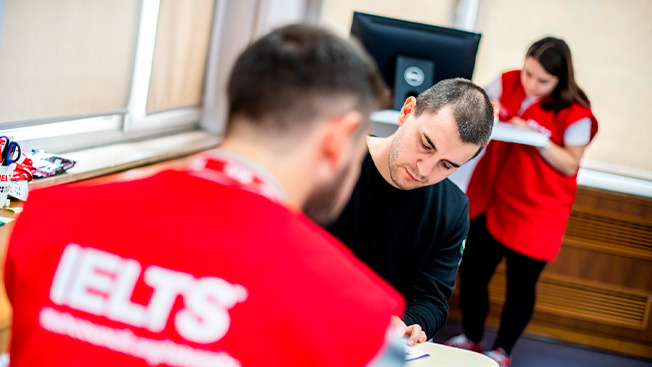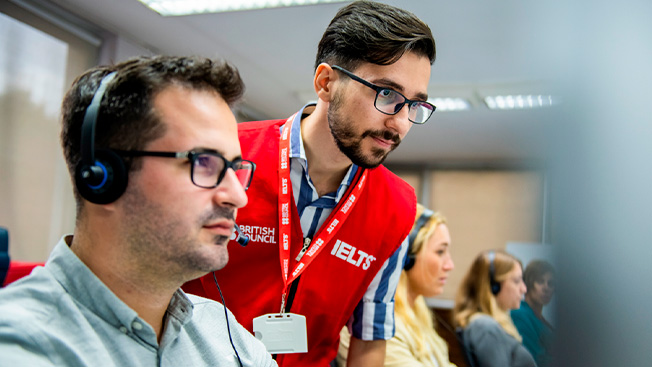Complete Guide to IELTS General Reading Test
Complete Guide to IELTS General Reading Test
26th Jul 2023 |
Find out what this stage of the exam is about, what the questions are like, and some tips to make the most of your time.
If you have questions about the IELTS General Reading Test regarding what kind of exercises or how you can practice from home, you are in the right place. In this article you will be able to understand in depth everything you need to know about the Reading Test.
It is important that you understand the guidelines and conditions of each module, so that your preparation is more precise and your results are higher.
What is the IELTS General Reading Test all about?
IELTS General Reading lasts 60 minutes, consists of three sections, and has a total of 40 questions. The themes focus on situations that you may face in your day-to-day life, both at work and at your university, as well as in your social life. To a large extent, broad topics of general interest are dealt with.
Section 1 tests your social skills and the questions revolve around common texts you might encounter in an English-speaking country. Section 2 examines your skills in workspaces or with workplace-related documents, training manuals and job descriptions. Finally, Section 3 presents a longer and more complex text on a topic of general interest.
The texts that you will read are taken from books, magazines, newspapers, advertisements, company manuals, guides, and all kinds of documentation. In addition, they are written for a non-specialist audience and can range from descriptive and factual to discursive and analytical. In case the text contains technical terminology, the section will be accompanied by a simple glossary.
IELTS General Reading Test question types
The questions have 11 different types of formats: multiple choice, identify information (true / false / not given), acknowledge the author’s opinions and arguments (yes / no / not given), match information, match titles, match characteristics, join sentence endings, complete sentences, complete summaries, complete notes, tables, flowcharts, and diagrams or short answer questions.
It is important to note that IELTS General Reading reviews the comprehension of the main ideas, details, implicit meanings and structure. Keep in mind that you must develop your arguments coherently and identify the opinions and purposes of the author.
Examples of exercises to practice at home
To get you familiarised with IELTS General Reading Test, here are two types of questions that may appear in this section. The text to which the questions refer is a biographical summary of the Polish physicist Marie Curie.
Find out how to study for the exam with IELTS Ready Premium preparation courses.

Identification of Information
In this question you must choose the correct option between true, false and not given related to a specific statement.
Using the information in the following paragraph (the introduction of the full text), you can answer the question.
Marie Curie is probably the most famous woman scientist who has ever lived. Born Maria Sklodowska in Poland in 1867, she is famous for her work on radioactivity, and was twice a winner of the Nobel Prize. With her husband, Pierre Curie, and Henri Becquerel, she was awarded the 1903 Nobel Prize for Physics, and was then sole winner of the 1911 Nobel Prize for Chemistry. She was the first woman to win a Nobel Prize.
Marie Curie’s husband was a joint winner of both Marie’s Nobel Prizes.
- True
- False
- Not Given
Complete the sentences
In this question you must write a word to complete the sentence. You can find the correct answer by reading the text and recognizing keywords.
When uranium was discovered to be radioactive, Marie Curie found that the element called _______________ had the same property.
In the following excerpt is the answer.
Marie Curie decided to find out if the radioactivity discovered in uranium was to be found in other elements. She discovered that this was true for thorium.
The same applies in the following exercise. You can refer to the text to verify the information and complete the sentence.
Marie and Pierre Curie’s research into the radioactivity of the mineral known as_______________ led to the discovery of two new elements.
Turning her attention to minerals, she found her interest drawn to pitchblende, a mineral whose radioactivity, superior to that of pure uranium, could be explained only by the presence in the ore of small quantities of an unknown substance of very high activity. Pierre Curie joined her in the work that she had undertaken to resolve this problem, and that led to the discovery of the new elements, polonium and radium.
If you want to prepare to take the IELTS, here we tell you how you can achieve it.
Tips to take advantage of the 60 minutes that you have
Managing your time properly is one of the key points to complete any module of the exam, especially in the reading module where you depend on your reading pace and your comprehension.
We want to share some of the most important tips that you should keep in mind to perform this stage in the best way.
- Do not spend more than 20 minutes in each section: if you get stuck on a question for too long, you can pass it and continue answering the test. You can come back to that question at the end to answer it more calmly.
- Take a look at the text before you start: you must answer 40 questions in 60 minutes, it is not necessary that you analyse each sentence in detail. Focus your efforts on the headings, subheadings, and the most important points of the text. This will help you to answer faster.

- Pay attention to the introduction and conclusion: The vast majority of times, the writer’s opinion or point of view is at the beginning or the end of the text.
- Identify the keywords: After recognizing them, you will be able to associate them with the concepts covered in the text. You can underline or highlight them so they stand out when answering the questions.
- Read all the questions before answering them: Quickly review what you are being asked and try to underline the keywords. You will find the answer faster with this method.
- Answer all 40 questions: Even if you don’t find the answer, try to answer all the questions and, if necessary, make a guess on the best option.
- Check your answers: Before handing in the exam and if you have time, check your answers. A review can be decisive in your grad
Check other tips that you can apply before, during and after taking the IELTS.